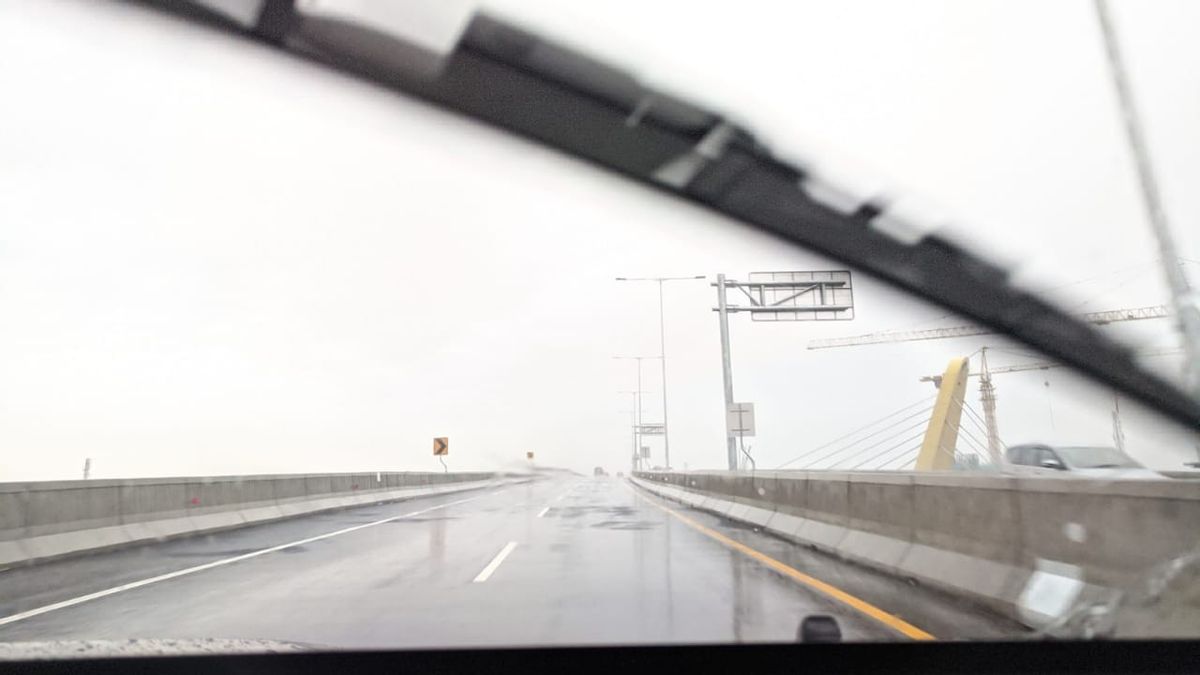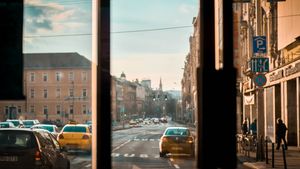JAKARTA - Christmas and New Year holidays are coming. The government welcomed it by inaugurating the Jakarta-Cikampek elevated toll road aka Japek II. Last Tuesday, December 17, we tried out the route that is the hope of breaking traffic jams along the toll road which is the main access to various cities along Java Island.
[Click to Taste]
We started our journey from the Gondangdia area, Central Jakarta at around 14.00 WIB. It had just rained at that time. The rain made us even more convinced that the decision to try the Japek II Toll Road was very correct.
From several reviews that we saw at that time, none of them discussed how the condition of the elevated toll road was when it was raining. For us, users of the Japek II elevated toll road must know, considering that the year-end holiday season coincides with the rainy season.

We arrived at the point at kilometer 9 of the Japek I toll road - the existing Japek route - heading for Cikampek at around 15:10 WIB. Some parts of the toll road are starting to be flooded. A puddle that would certainly expand as the rain continued to fall. Jasamarga patrol car can be seen at the entrance of the elevated toll road. Unfortunately, we did not find another patrol car along the elevated toll road.
We rode on the elevated toll lane at speeds of no more than 20 kilometers per hour, following the accompaniment of other cars queuing up to enter the same lane. At 11 to 12 kilometers, we started to increase our speed, slowly climbing to 80 kilometers per hour.
Stay at 80
Our feelings change when the constant gas pulls at a speed of 80 kilometers per hour, according to the advice given by the authorities to each flyover user. At that speed, the car begins to rock. It wasn't bad, but we who were in the car agreed about the sensation of shaking it.
[Click to Taste]
At an altitude of 15 meters from the ground, the wind really disturbed the car's speed. Not only wobbling, we also felt the Toyota Avanza Veloz car that we were riding a little 'floating'. The weight of the six people in the car did not reduce the impact of the wind.
The floating sensation is exacerbated by the effect of bouncing aka bounce every time our tires cross the road connection. The whole car shook every time it passed the road divider. In our heads, if we visualize it, perhaps we are going like a rock thrown horizontally over the surface of the water.
Transportation observer Djoko Setijowarno assessed that the elevated toll road is actually sufficient to meet construction standards. However, it is clearly not perfect. Therefore, when it is operated for a fee, the manager is obliged to improve various things in construction, including road connections.
According to Djoko, the construction improvement process could take up to two months. "Improvements must be made with regard to safety, security and comfort aspects," said Djoko, quoted from Republika, Thursday, December 19.
Apart from problematic road connections, we also found road damage at a number of points. Throughout the 12 to 15 kilometers alone, we found at least five damages in the form of asphalt fragments that endangered the speed of our car.
We try to increase the speed of the car to 100 kilometers per hour. The result, it got worse. The floating sensation is increasingly felt. The shaking and reflections got worse. We also lowered our speed back to 80 kilometers per hour.
In rainy conditions, the problems on the elevated toll road are increasingly complex. Puddles covered the bumpy sections of the road. The road conditions also feel slippery. In addition, the visibility needs to be a concern for drivers. It's not just the rain. However, the wavy shape of the flyover creates so many blind spots.

Several times we experienced losing sight of the cars in front of us when going uphill or downhill. This condition is actually not strange. Of course we have experienced this experience when crossing other toll roads. Cipularang toll road, for example.
At high altitude, however, the horrific impact of the flyover blind spot feels even more terrifying. Yes, though on the other hand, fear also raises alertness. What is clear, the blind spot of the elevated toll road must be the attention of drivers.
After completing the 36.4 kilometers of elevated toll roads, we again checked the availability of our car gasoline. For a car with a capacity of 1,300 cc, we are not in trouble with the unavailability of gas stations along the elevated toll road.
Our gasoline indicator doesn't show a slight drop in goods. We also have no problem with the unavailability of rest areas or rest areas. The smooth road conditions did not make us experience significant fatigue.

It has been calculated that at least it took us 40 minutes to arrive at kilometer 48, the end point of the elevated toll road. Maybe different conditions will occur if the road is jammed. Fatigue or the urge to urinate may be a problem.
With the various experiences we have had, it seems we can understand why the authorities set the figure of 80 kilometers per hour as the highest speed limit for passing the Japek II elevated toll road.
The English, Chinese, Japanese, Arabic, and French versions are automatically generated by the AI. So there may still be inaccuracies in translating, please always see Indonesian as our main language. (system supported by DigitalSiber.id)













